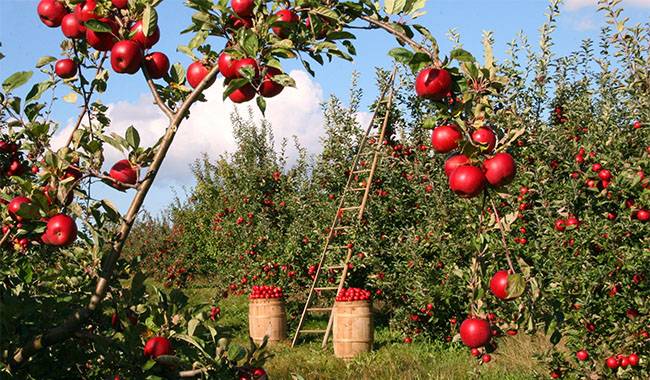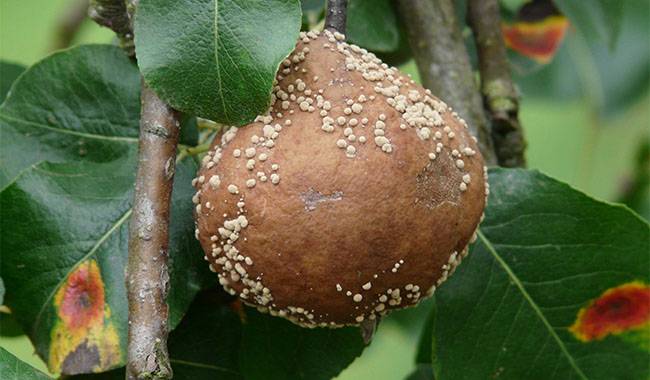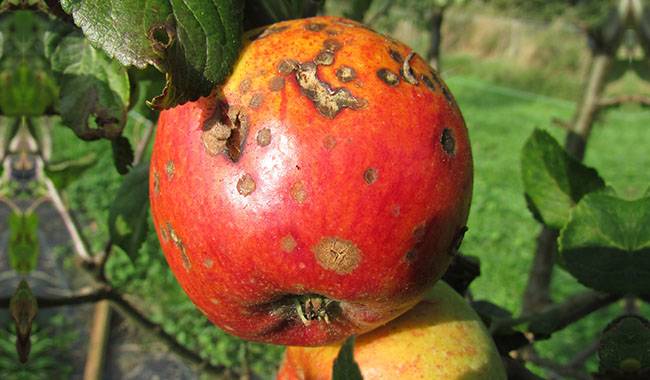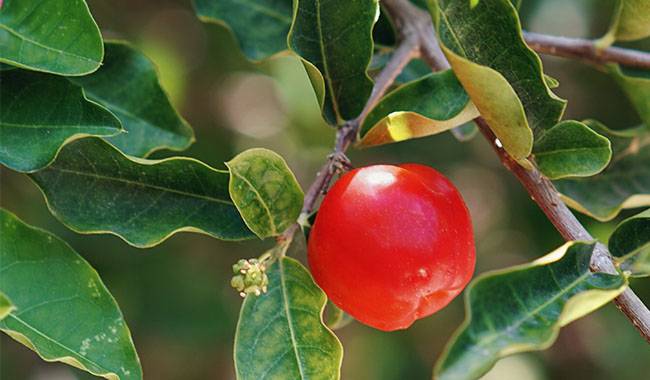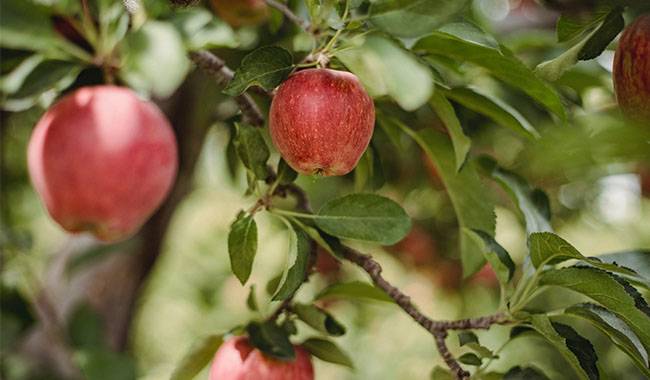
Apple trees are one of the favorite fruit trees of most gardeners. However, in order to harvest a great harvest of apples, you have to work every year. And the first priority it’s to protect apple orchards from diseases.
In this article, we will describe the most dangerous and common apple tree diseases: several types of cancer, candidiasis, scab, CytoSport, gray mold and brown spot, and leaf blight.
You may never encounter these diseases, but you need to know about them in order to take timely protective measures.
Bacterial cancer of apple trees
Bacterial bark necrosis is another name for bacterial cancer. It is ubiquitous. It is spread by wind, insects, and untreated garden tools. Often carries infected seedlings into the garden. Preserved on diseased plants.
Onset begins in spring: buds, bark, and leaves turn brown, young shoots turn black and become dry. The affected bark swells and soft, swollen, or sunken spots appear with cherry-purple margins.
The wood rots and releases an acidic odor (fermented apple juice). Plants die. The chronic course shows a gradual enlargement of ulcers and profuse gum secretion.
Common cancer
Common or European cancer often appears in frostbite and other mechanical damage to the parts of the tree. It often infects weak seedlings. The pathogen persists in the diseased wood.
Initially, elongated brown spots appear on the bark, which gradually dries out and crack. If the bark is removed, deep ulcers are found underneath, with raised edges due to enlarged callus tissue.
The ulcers become deeper and deeper with each passing year. If young trees are affected, they will die after 2-3 years.
Black anthracnose
The occurrence of black cancer in apple trees is mostly seen at the fork of backbone branches. Embedded brownish-red spots appear, which gradually become darker and are covered with conidia (fruiting bodies of the fungus). Affected bark areas become “goose skin” like, with layers cracking, drying, and falling off. On the fruit and leaves, the carcinomas appear as black spots resembling black rot. If Poe is affected, the plant will die completely within a few years.
Black anthracnose can also manifest itself in other ways, especially if the trees are densely planted. The bark darkens to black in color and is covered with numerous cracks that crumble easily.
Apple tree cell division disease
The second disease name is infectious bark shedding disease. Infection occurs through mechanical damage. The bark of the bracts and branches turns brown and withers. Small gray-brown nodules – stromal fungi – form on the affected areas. These areas become dry and angry.
Candida
This disease is also known as Candida burn. It is caused by a variety of pathogens, so it has several manifestations. The first manifestation is a brief browning and peeling of the fruiting branches along with the florets, ovaries, and leaves, which then remain intact for a long time. The plant looks as if it has been burned by fire.
The second manifestation, called monili or fruit rot because it has developed on the fruit. And here we also observed two types of damage.
First, it is caused by fruit infestation that eventually spreads to the entire surface of the apple. Many grayish-white mats of fungal spores are formed on the decayed surface, and these are concentrated in position. The fruit wilts and mummifies, remaining on the tree as a place to preserve the infection.
The second disease occurs when the fruit is infected late in the orchard or when the harvested fruit is already in preparation for transport. It manifests itself by the darkening of the fruit: the surface of the apple gradually turns black (up to blue-black), acquiring the characteristic glossy, smooth and leathery feel.
The flesh of the affected fruit is brown, soft, and flabby, with a sweet wine taste. There may be no spores, preventing further spread of the infection.
Apple scab
This disease is mostly found on the leaves and fruits of apple trees and damages their appearance. It overwinters on plant remains.
When infested in spring and early summer, large dark green, later brownish, downy spots appear on the upper side of the leaf plate. Infected leaves lose their color and fall off prematurely. If reinfected, the spots are small and almost undetectable.
On the fruit, Apple scab develops unsightly black cracked spots of varying size and shape. Infected young shoots are rare, but can be found.
Apple black spot disease
Appears mostly on the leaf surface as round brown spots with dark margins that gradually expand and fuse. If the infestation is severe, the branches will appear to wilt. Crusts may also appear on the fruit, but more often the infection occurs inside the apple, at the core. Often scabs are found on apple trees at the same time.
Chlorosis
Chlorosis can be caused by a variety of factors: insufficient or excessive water, frostbite, bark wilt, stem or root rot, necrosis, and virus damage. The most common, however, is the lack of nutrients (iron, zinc, sulfur, calcium, magnesium, potassium) supplied to young shoots due to external conditions. It manifests itself as a uniform lightening of the leaf tissue between or along the veins.
HOW TO CONTROL DISEASES OF APPLE TREES?
Most of the listed diseases affect weak plants (therefore, when examining the tree, often not one but several diseases are found at the same time), and they “love” dense plantings.
The infection is spread mainly by insects carried by the wind from tree to tree, but also on working tools (pruners, saws). Penetration into tree tissues through mechanical damage. Bacterial and fungal spores overwinter in diseased tissues and contaminated plant residues.
On this basis, it becomes clear why it is important to follow the same agronomic rules in apple cultivation as in other crops, such as planting at optimal spacing, timely treatment of frostbite and cuts, removal of plant residues from under the trees, removal, and destruction of mummified fruits, and use of chemical control measures when necessary.
If bacterial, common, black anthracnose and CytoSport are found in the garden, trees are treated with Bordeaux mixture or its substitutes, etc. in early spring every year.
Also, remove diseased branches, clean the affected area, disinfect the wound with 1% copper sulfate and treat the wound with special paint. Burn to cut off the infected part of the plant.
To prevent and treat powdery mildew, spray with 1% Bordeaux mixed solution and repeat the treatment up to 3 times, according to the instructions.
To combat scab, spray with a 1% Bordeaux mixture before flowering and repeat after flowering.
To combat chlorosis, it is important to understand what causes yellow wilt. If this is non-infectious chlorosis, the apple tree needs to be fed with a fertilizer that lacks the element. If the cause is a disease, then it must be fought.




